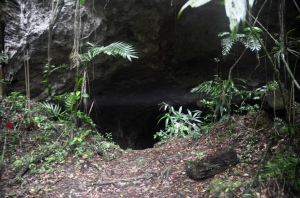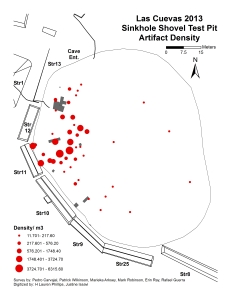by Chancellor Dorothy Leland
My role is to say something that helps open up conversations, and I need to confess two handicaps from the beginning.
First, I am not a historian and hence do not have the expertise to critically assess the analyses and arguments that Professor Park presented us with today.
My second handicap is that I am map impaired.
By map impaired, I mean that I often struggle to successfully use the conventions for understanding the maps that I encounter in my daily life. I most frequently experience this handicap with navigational road maps, which appear to me as a dizzying array of highways, streets, and intersections that fail to correspond to the world as I inhabit it. I am a country girl who learned to find my way using a set of physical landmarks—the old oak tree in front of the yellow house, Mr. Miller’s orchard, the dirt path that meandered between fenced pastures to the spot, sheltered by a stand of eucalyptus trees, where I boarded the school bus. To this day, I rarely pay attention to street names and instead look for navigational beacons in the landscape that surrounds me—churches, billboards, dwellings, tree clusters, and others icons that over time orient me in my environment.
Of course, I could draw navigational maps that more closely correspond to my own sense of place, and indeed I sometimes do so to supplement standard street directions for people who want to visit me. And as a child I liked to create maps that took me to fictional treasures or navigated me through imaginary worlds.
The point is that maps are human representations, symbolic depictions of place and relationships within place. Depending on the map, their features are informed by individual psychology, geographical knowledge, religion, politics, and many other factors. As such, maps provide fertile soil for insight from multiple disciplinary perspectives into the human symbolic imagination and the influences that shape it across cultures and historical periods.
The so-called upside down world maps provide a compelling locus of inquiry regarding map-making conventions and history. These maps place the labeling on a map so that south is up, north is down, east is left, and west is right. As a consequence the Southern Hemisphere appears at the top of the map rather than at the bottom in contrast with mapping conventions that prevail in our own time and culture. Indeed, it is only from within our own representational convention of orienting North to the top that maps with the South up appear upside-down.
As Professor Park noted in her presentation, the decision to orient maps according to a single prime direction varies across cultures, and there is no purely geographical reason why one direction supersedes others. In looking at the geographical understanding and techniques for mapping the world across different cultures and time, she finds the geographers “all drew observations from the Eastern rising and western setting sun to orient their maps along an east-west axis and north-south axis that followed the position of the North Star or the mid-day sun. Yet geographers of different societies presented this orientation in different ways according to the symbolic and sacred values held by their traditions.”
Although Professor Park reviews several hypotheses that may explain why, for example, the Islamic world adopted a south-up mapping convention, the focus of her study is not on this particular question but rather to trace the transfer of certain mapping practices and views from one society to another and to show how this influenced people’s geographic understanding. I found her discussion of the influence of Islamic world maps in both China and Europe fascinating and a compelling example of how our understanding and symbolic representation of place, whether it be the world or something much smaller, can shift over time through contact and the selective blending of traditions.
Consider the case of China. Apparently, the earliest extant maps placed north on the top, consistent with Greco-Roman mapping and in contrast to Islamic world mapping. As Professor Park suggests, this may have been to indicate the primacy of a sacred direction based on a traditional Chinese idea that envisions the emperor as sitting in the north looking southward as if down on his subjects. This might also have been because the Chinese placed value on the North Star as a fixed star indicating the geographic pole used for voyages. These maps apparently also focused on drawing Chinese territory to the neglect of the larger world, and consistent with Chinese cosmology, which viewed the earth’s shape as a quadrangle under a spherical sky, maps were drawn within a rectangular frame. The impetus for change, according to Professor Park, was the political need for maps with a broader Eurasian perspective when China emerged as the center of the Mongol empire. Islamic maps and astronomical instruments became available as scholars migrated from Central Asia and Iran to China in the early thirteenth century, and this, combined with a strong political motivation, led to a new Chinese world map incorporating important Islamic influences.
But while there is a clear story to tell about the Islamic influence, Chinese map-making during this period apparently did not incorporate some important elements of the Islamic tradition—including, perhaps, the Islamic concept of the geographical round globe and the south on top orientation of Islamic maps. And the influence of these and other aspects of the Islamic tradition were not strong enough to stick over time and through changing political circumstances. When the Mongol empire failed and was replaced by the native dynasty, Chinese map-making for the most part continued in the earlier mapping tradition.
I have summarized this portion of Professor Park’s presentation because it holds broader questions that interest me—and perhaps you as well. Professor Park opened her presentation by noting that, “historians can often detect important political or cultural shifts caused by a change in perspective that allowed people to see things in a new way.” And although astute historians, armed with appropriate historical documents, can trace these shifts, it may be more difficult to understand the factors that determine or predict when a change of perspective is more likely than not to become firmly embedded as part of the dominant representational framework of a culture or society. In the case of China after the Mongol empire failed, what were the pulls back to the older, more traditional map-making conventions?
I suspect that the explanation does not belong to the province of history alone but rather requires, in addition, political, anthropological, sociological, and psychological modes of inquiry and explanation. Deep cultural change is notoriously slow and unstable in the absence of pervasive and practical, political, or religious influences to motivate the change.
My interest in this question is related to the ways that the study of the past from multiple disciplinary perspectives can inform our understanding of the present and possible future. I wonder, for example, what might be capable of dislodging the reification in the modern western world of the north-on-top map orientation. The question is speculative but also relates more broadly to questions about how traditions of representation get lost, how they might be recovered as part of our active framework for understanding the world, and how deep, lasting changes in the dominant representational frameworks of a culture or society manage to occur.
We know that any given map-making tradition represents only one of many possible ways of depicting place or world. With respect to world-maps, no curved surface like that of the Earth can be projected in two dimensions without some distortion, and different methods of projection are better for conveying elements such as shape or size, compass direction, etc. than others. The political firestorm that emerged several decades ago over the methods of projection created in 1569 by Mercator, a Flemish mathematician and cartographer, rested on complaints that the distortion of territory that resulted from his method of projection (still widely used at the time) reinforced Eurocentric bias and western imperialism. Even earlier, several surrealists used representational hyperbole to expose the Mercator projection’s supposed Eurocentric bias by shrinking Europe and eliminating some of its countries. Of course, the Mercator map projection was created for navigational purposes by representing lines of constant compass bearing and not as a representation of the relative size or importance of world states, territories, and regions. But it became over time, due to its widespread use for non-navigational purposes, the standard map projection for many westerners. Its distortion of large sections of the world might indeed have reinforced notions of Western superiority.
Contemporary upside down map enthusiasts point, similarly, to the way in which simply turning the North-up map upside down can jar us out of our complacent sense of place in a world that we have come to see through map-making conventions that dominate the modern western world. It has thus entered classrooms as an educational tool.
I cite these examples as an illustration of the fact that maps, like other forms of human representation, are rich with historical, cultural, anthropological, religious, political, and practical significance. Professor Park has helped us to see the chain of influence between several different cultures during a specific time period that resulted in significant changes in local geographic understanding and world map conventions.



